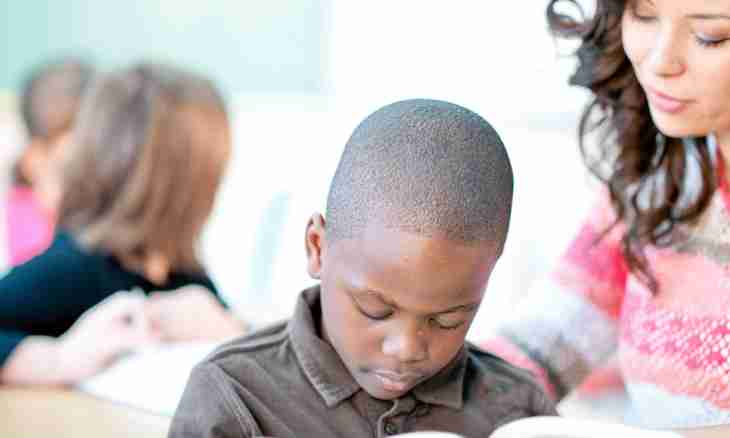The first children's smile the most sincere and clean. The first uncertain steps of hardly strengthened legs are incredibly touching. The first words of the kid are most significant. Parents always very much are proud of the child who comprehends the world surrounding him day after day. And in their forces in every possible way to contribute to its successful development, including intellectual.
Instruction
1. The kid begins to say the first sounds approximately since two months. From this age it is also necessary to teach the child to speak. Early communication with the child should not consist of words and the more so offers, use language, more clear for it, - babble. At this stage the kid has a desire to imitate your sounds. It is desirable to work at once and on development of fine motor skills. The center of coordination of the movement of fingers of hands and the speech center are located so close that active development of the first involves not less active development of the last. In other words, the quicker the kid will learn to work fingers, the it will be simpler to seize to him speech skills.
2. Aged from 6 up to 12 months the child passes from ability to listen to attempts to reproduce heard. Take for the rule to accompany each your action with comments. Having noticed that the kid is keen on something the events, immediately aloud describe the event which riveted it attention. Thus, in a brain of the child a certain communication between words and their values will be created.
3. Approximately by a year the kid perfectly acquires a sign language. Your task - in the course of the game to force it to replace gestures with words. Therefore do not start at once following its "instructions", having got, for example, a toy from the top shelf. Specify what is necessary to it: machine or bear, big or small, etc.
4. You are not lazy to read to the child verses and fairy tales, at the same time in details discuss illustrations, in detail paint plots which found reflection in pictures.
5. Since two years the kid passes from process of accumulation of a passive lexicon to attempts to find for it active application. At this stage it is necessary to connect the speech with coordination of the movement. It is better to carry out it, certainly, by means of a game. For example, play in "give me …". Rules are extremely simple: you call or describe a subject which the kid has to give you that it with pleasure also does.
6. At the same age it is possible to start training of the kid in reading. It is recommended to begin with cubes which each side has to contain not only a letter, but also the graphic representation of a word symbol. It is necessary to say letters as they sound as a part of words. For example, letter "L" is "лэ", but not "эл", "To" is "to", but not, etc. You do not hurry the child, it is quite enough to study on a letter for couple of days, but do not forget to review periodically.
7. After you walk on all letters on cubes, replace visual aids. The fact is that in understanding of the child of a letter will be associated with certain images therefore get cubes with other symbols, cards or at all the abc-book in pictures.
8. Approximately since three years the kid is ready to start reading. For a start you can use the same visual aids. Make any syllable in which the concordant is followed by a vowel of letters, for example, or "pas", then trade letters places and you say each syllable drawlingly. Then consider the syllables consisting of two concordants and a vowel.
9. Having studied the available cubes and cards, acquire the special book in which all text is broken into syllables. The training grants in which after each simple sentence there is a graphic representation are good. Thus, the kid will be able independently to control correctness of reading. When the child learns to read surely syllables, present him the most present children's book where words are written as in adult books, being not divided into syllables.
